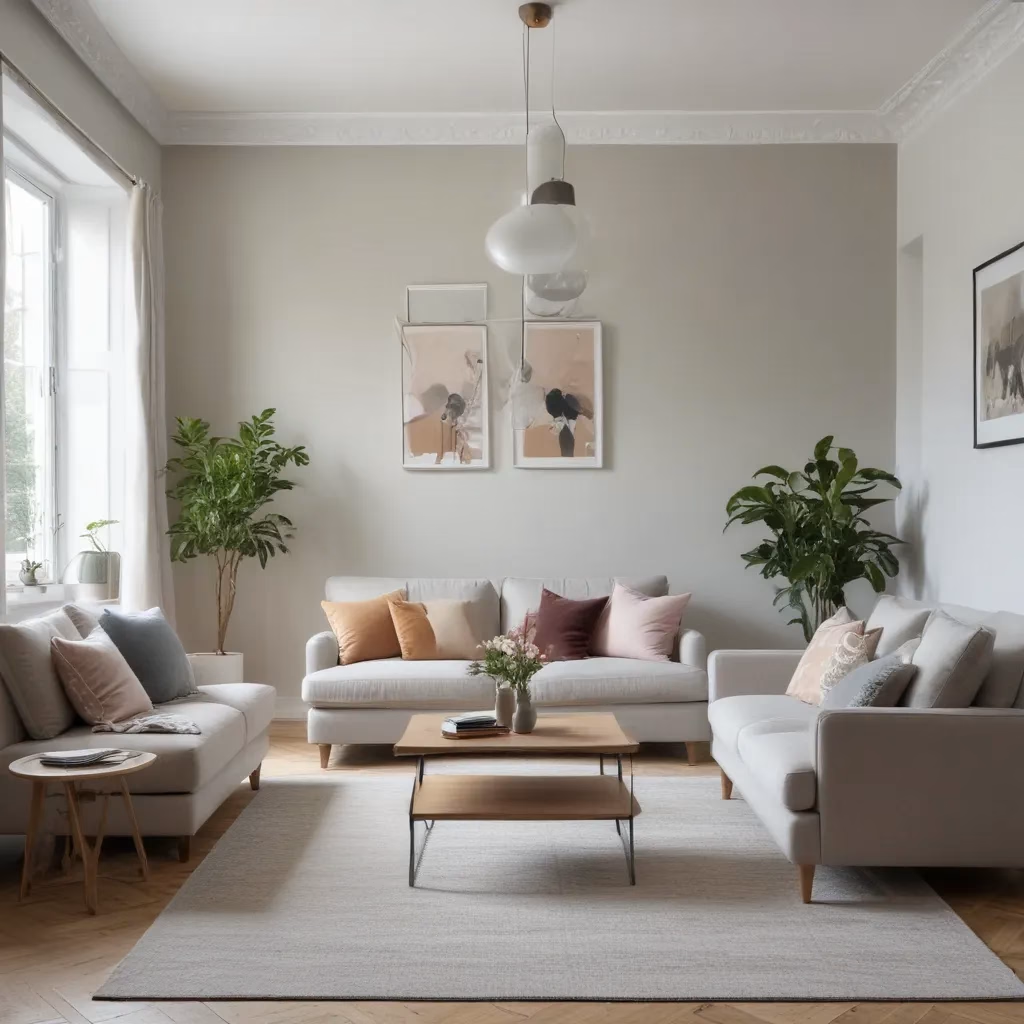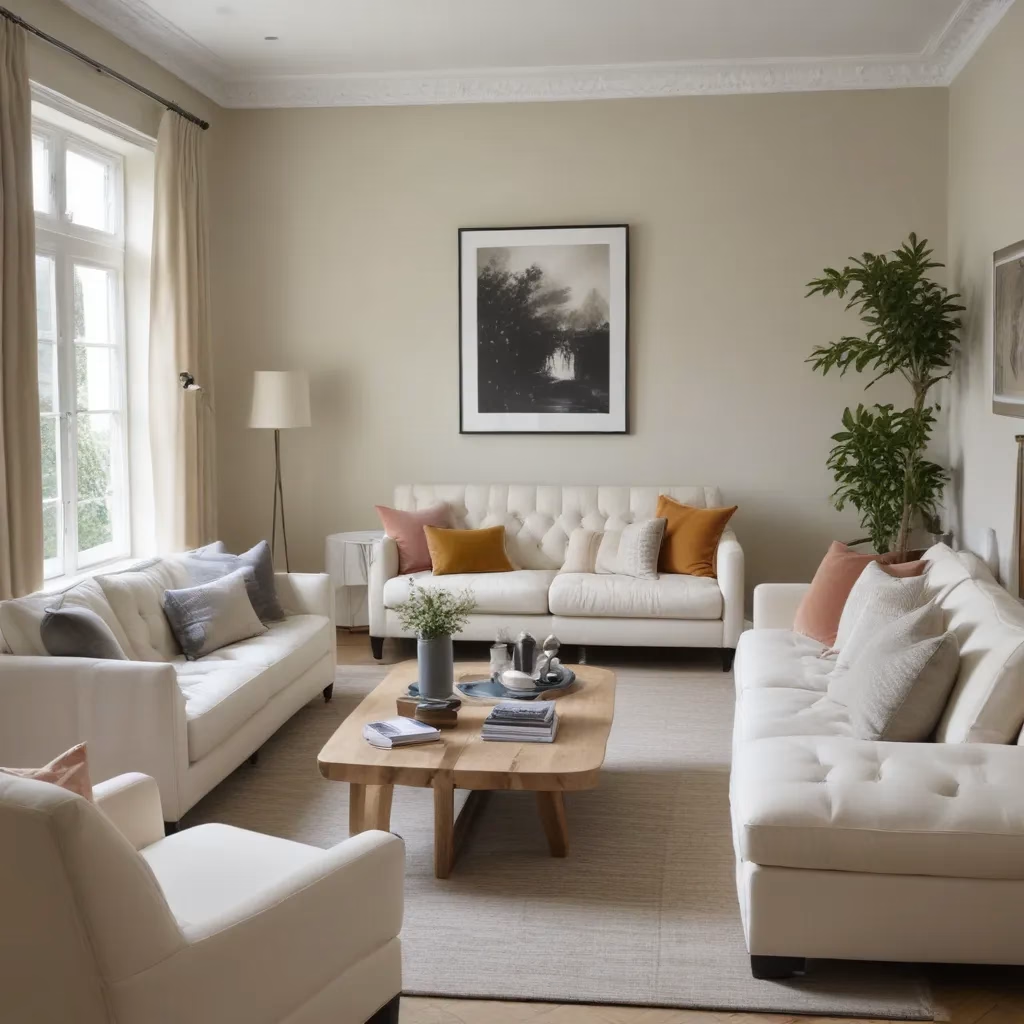
As an experienced furniture consultant and interior design writer, I’ve learned that the key to creating a functional and visually appealing living room in a tight space lies in strategic furniture placement. In our 15 years installing… Too often, people make the mistake of lining up their sofas and chairs against the walls, leaving a cavernous, lifeless void in the middle. This arrangement may seem logical, but it can actually make the room feel smaller and more disjointed.
Now, this might seem counterintuitive…
The secret? Float your furniture – pull it away from the walls and arrange it in a more intentional, conversational layout. This simple trick can work wonders in opening up the flow and making even the most compact living room feel warm, inviting and purpose-driven.
Sofa Selection and Upholstery
Before we dive into layout strategies, let’s start with the foundation of any living room: the sofa. Choosing the right sofa size, style and upholstery can make a big difference in how your space functions and feels.
Fabric and Upholstery Considerations
When it comes to upholstery, you’ll want to consider both the practical and aesthetic elements. Durable fabrics like high-performance polyester, microfiber or even leather are great options for homes with kids or pets. They stand up well to daily use and are easy to clean.
On the style front, think about how the sofa’s upholstery will complement your overall décor. Tufted or button-tufted sofas can add a touch of sophistication, while slipcovers offer a more casual, relaxed vibe. Lighter solid hues or subtle patterns tend to work well in small spaces, as they don’t visually weigh down the room.
Sofa Styles and Dimensions
The size and configuration of your sofa is crucial in a compact living room. Opt for a standard-sized sofa (around 84-90 inches) or consider a sectional or modular piece that can be customised to fit your space. Avoid oversized sofas that dominate the room – they’ll make the area feel cramped and crowded.
If you have an especially small living room, look for apartment-sized or loveseat options that max out around 72 inches. The scale will feel more proportionate and leave you more flexibility with placement.
Sofa Buying Guide
When measuring for a new sofa, be sure to account for clearance around the piece. You’ll want at least 18-24 inches of space on each side to allow for walkways and access. And don’t forget to measure the entry points and narrow hallways it will need to navigate!
Finding the right balance of form and function is key. Choose a sofa that you love the look of, but that also meets your needs for comfort and usability. With a little planning, you can create a cosy, inviting seating area that maximises every square inch.
Living Room Layout Strategies
Now that you’ve selected the perfect sofa, it’s time to think about how to arrange it – and the rest of your living room furniture – for optimal flow and functionality.
Room Dimensions and Furniture Placement
As I mentioned earlier, the key is to avoid pushing all your furniture up against the walls. This creates an awkward, cavernous void in the middle of the room. Instead, float your sofa and chairs in the center of the space, angling them slightly towards each other to encourage conversation.
Pay close attention to your room’s dimensions and how the furniture will fit. In a long, narrow living room, you may want to orient the sofa perpendicular to the longest wall to make better use of the space. Or in a square-shaped room, a symmetrical arrangement with a sofa facing two chairs can work beautifully.
Spatial Awareness and Zoning
One of the biggest challenges in a small living room is striking the right balance between open, airy spaces and cosy, intimate seating areas. Use your furniture placement to define different zones within the room – a conversation nook here, a reading area there.
Strategically positioned area rugs can also help delineate zones and anchor your furniture groupings. Just be sure to choose a rug that’s large enough to accommodate the front legs of all the major pieces.
Lighting and Décor Integration
Don’t forget about lighting and décor when arranging your living room. Floor lamps, table lamps and even overhead fixtures can help create a warm, inviting ambiance. Position them to enhance the functionality of each zone – for example, flank a reading chair with matching lamps.
Accessorising with throw pillows, blankets and artwork can also help tie the room together visually. Choose pieces that complement your sofa’s upholstery and the overall aesthetic. The goal is to create a cohesive, intentional look that still feels comfortable and lived-in.
Sofa Care and Maintenance
Of course, once you’ve perfected your living room layout, you’ll want to keep your sofa looking its best for years to come. Proper care and maintenance are key.
Cleaning and Stain Removal
Depending on the type of upholstery, you may need to use specialised cleaning products to keep your sofa fresh. Spot clean spills and stains as soon as possible using a mild, water-based solution. For deeper cleaning, you can rent a steam cleaner or hire a professional upholstery service.
Prolonging Sofa Lifespan
Regular fluffing and rotating of the cushions can help maintain your sofa’s shape and support. Vacuum the upholstery periodically to remove dust and dirt, and consider using a fabric protector to guard against future stains and wear.
If your sofa starts to show significant signs of age, reupholstering may be a cost-effective solution. This not only refreshes the look, but can also extend the life of the underlying frame and cushions.
Styling for Comfort and Aesthetics
Finally, let’s talk about how to style your living room for the perfect balance of form and function. After all, a beautifully arranged space is only truly successful if it’s also comfortable and inviting.
Incorporating Soft Furnishings
Throw pillows, blankets and area rugs are your secret weapons for cozying up a living room. Layer complementary textures and patterns to create a visually interesting, tactile experience. Just be mindful not to overdo it – you still want the room to feel open and uncluttered.
Balancing Form and Function
When selecting accent furniture and décor, prioritise pieces that are both stylish and practical. A chic, low-profile coffee table keeps sightlines clear, while a pair of comfy, swivel chairs allows you to easily converse with guests or shift your focus to the TV.
Personalizing the Living Room
Ultimately, the key to a welcoming living room is infusing it with your own unique style and personality. Incorporate family photos, artwork, treasured mementos – anything that makes the space feel distinctly yours. Rearrange and change up your accessories seasonally to keep the room feeling fresh.
With thoughtful planning and a bit of creativity, you can transform even the tightest living room into a warm, inviting haven. So get ready to float that sofa, layer on the soft furnishings, and create a space you’ll love spending time in.
Example: Living Room Makeover Series with Modular Sectionals



